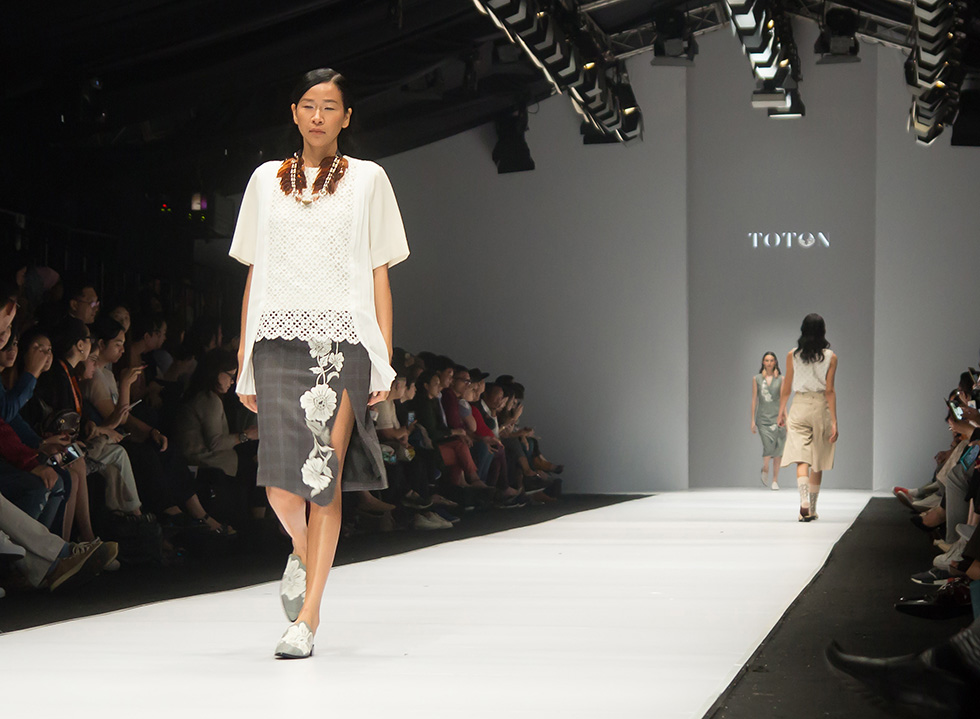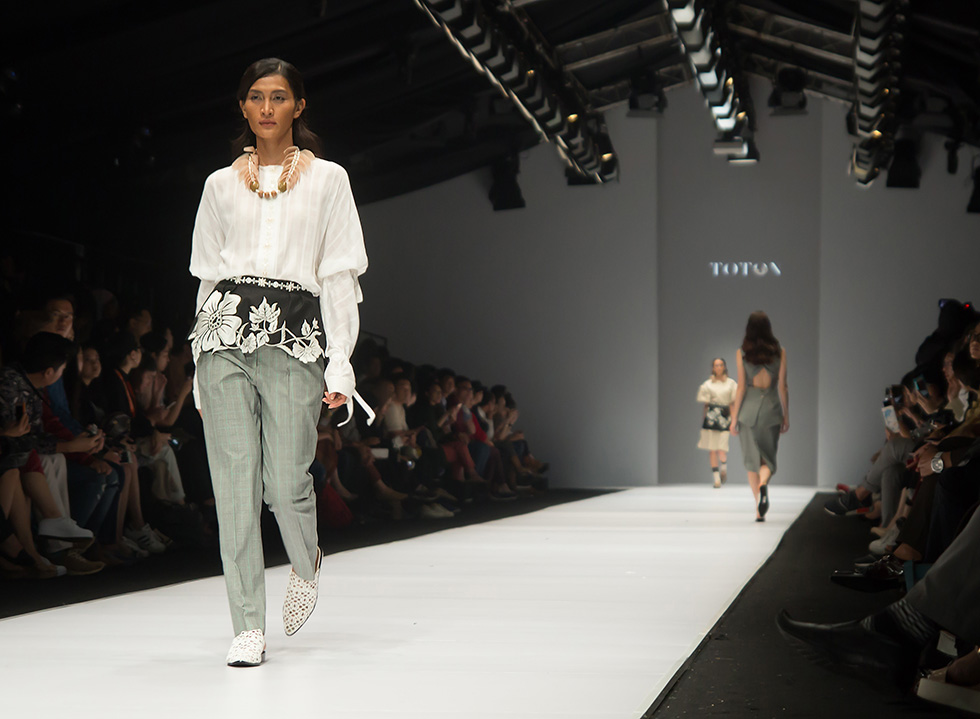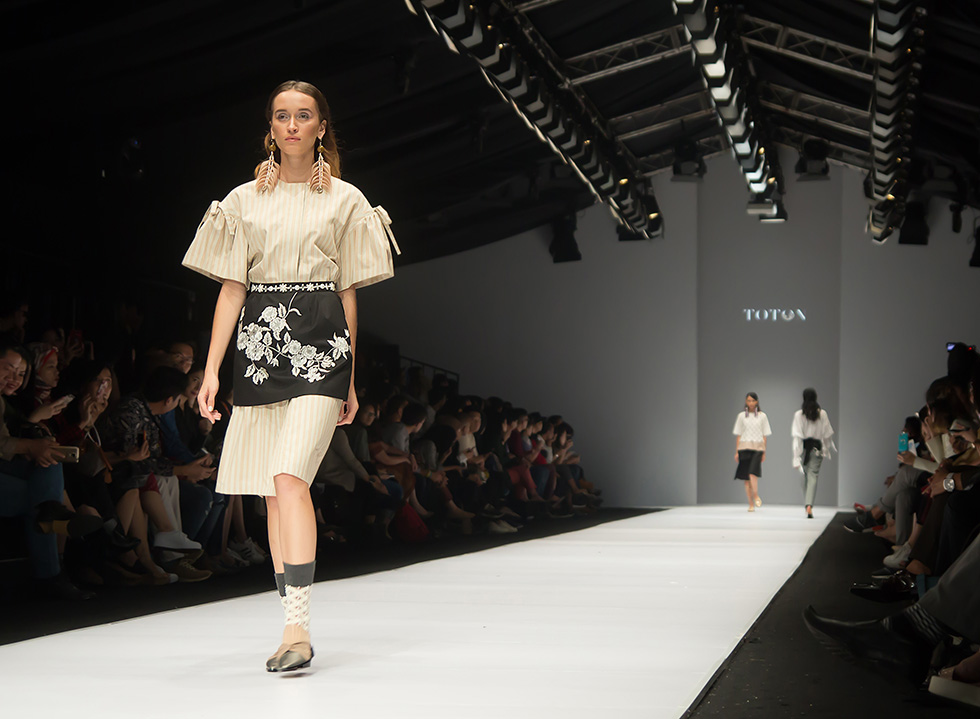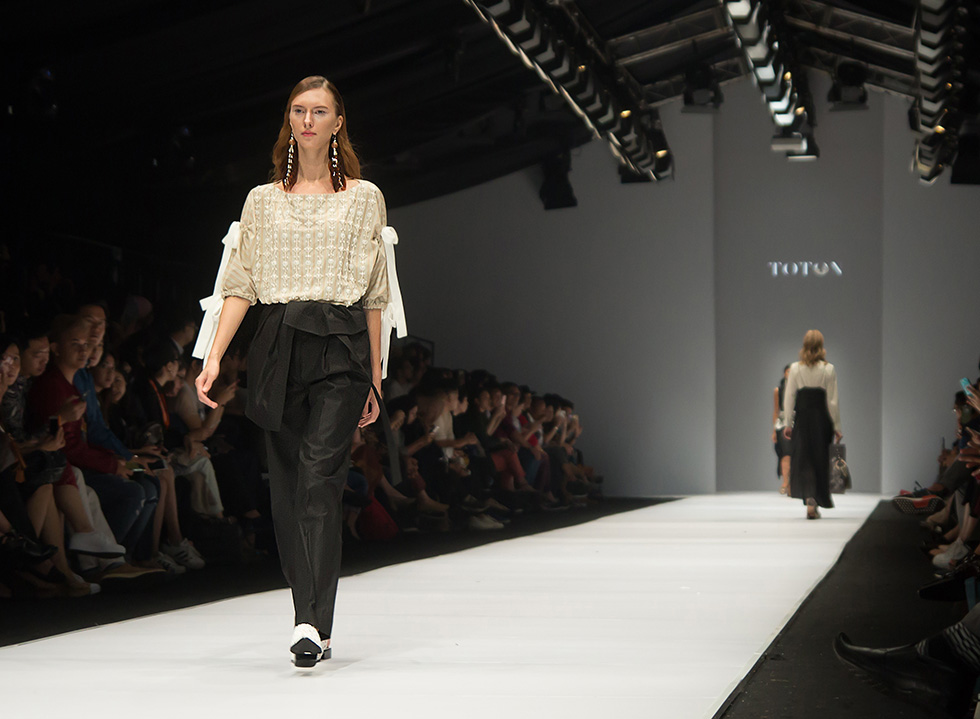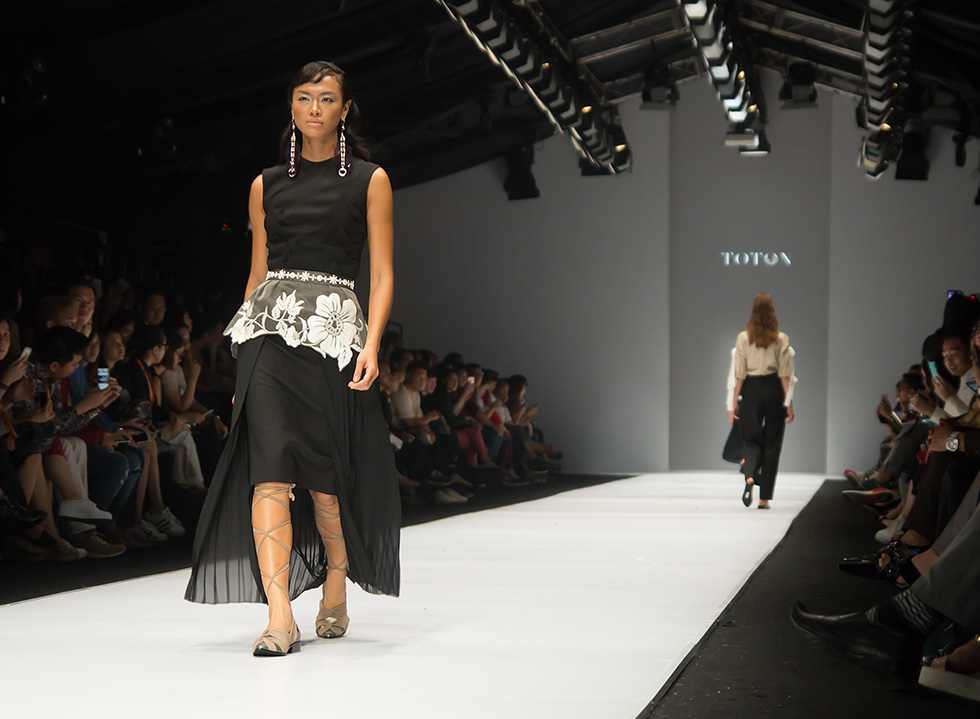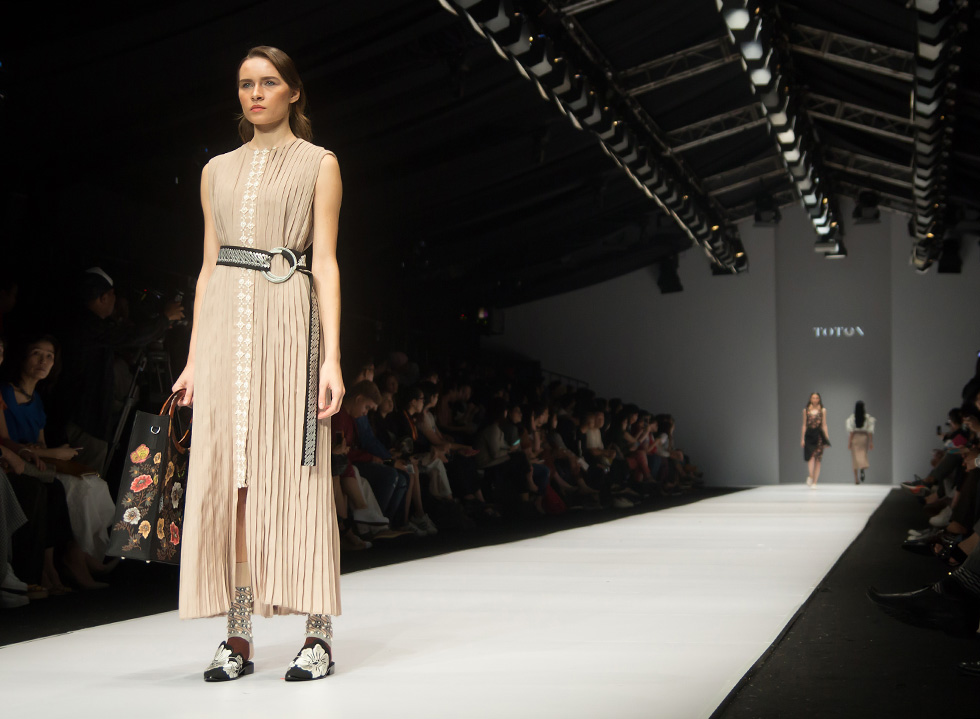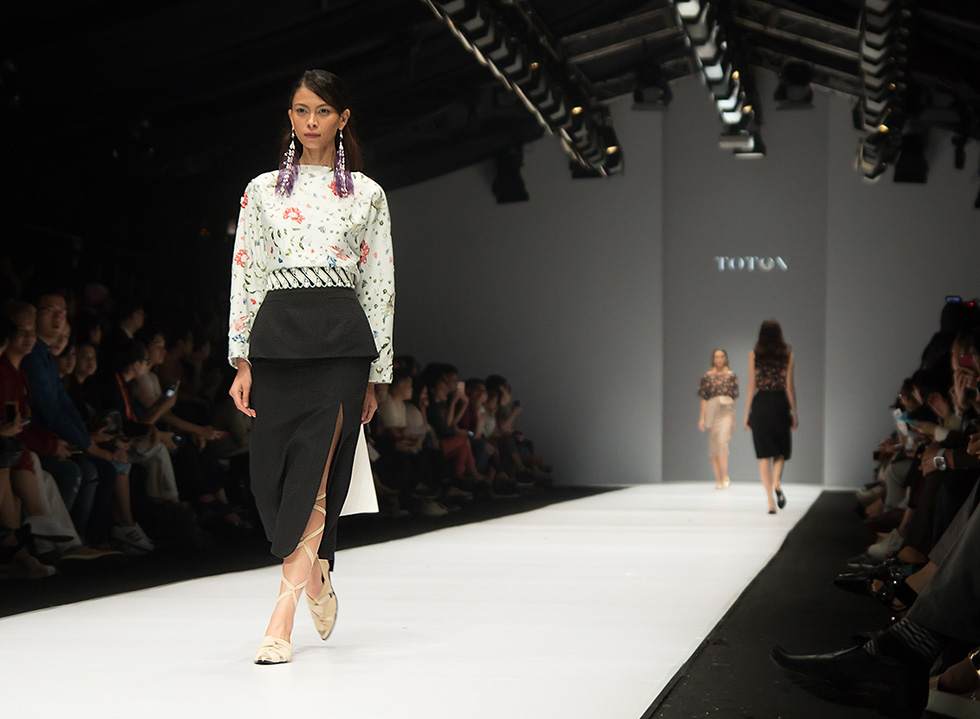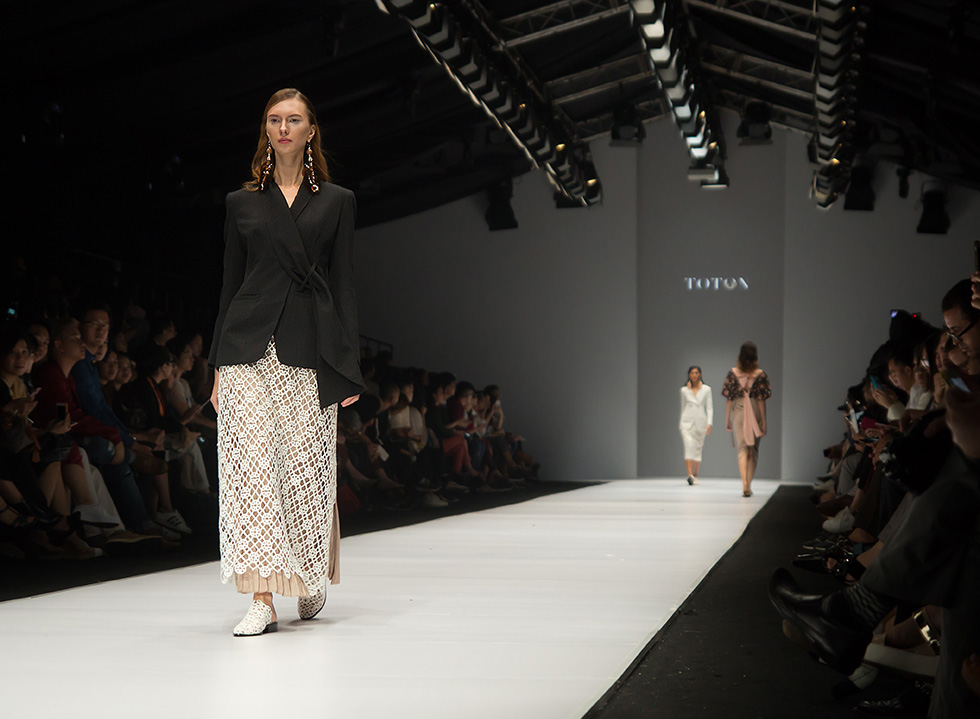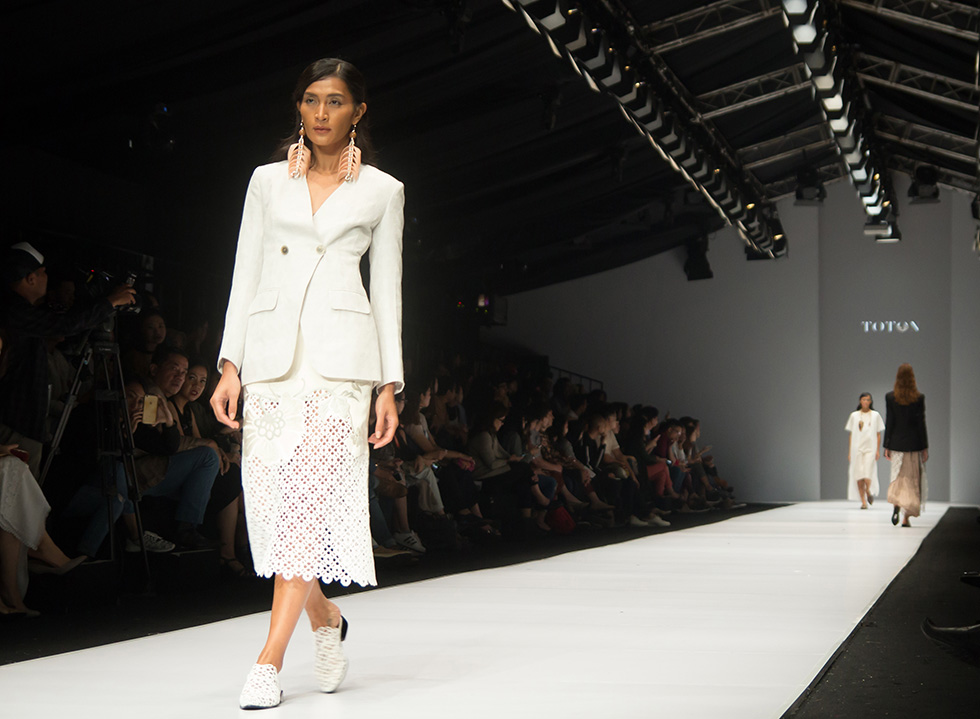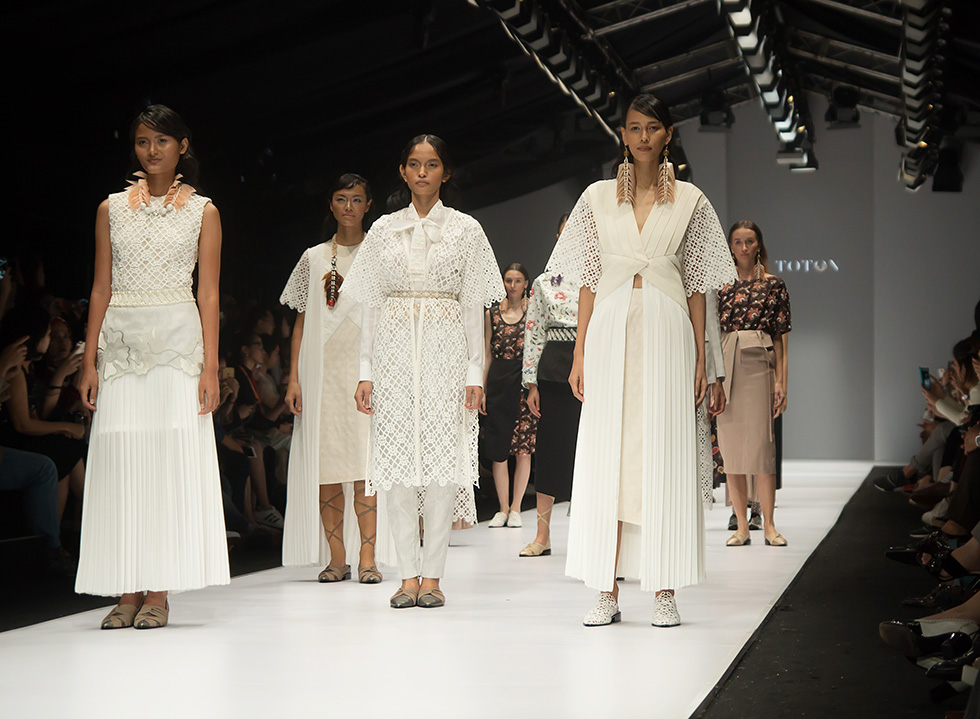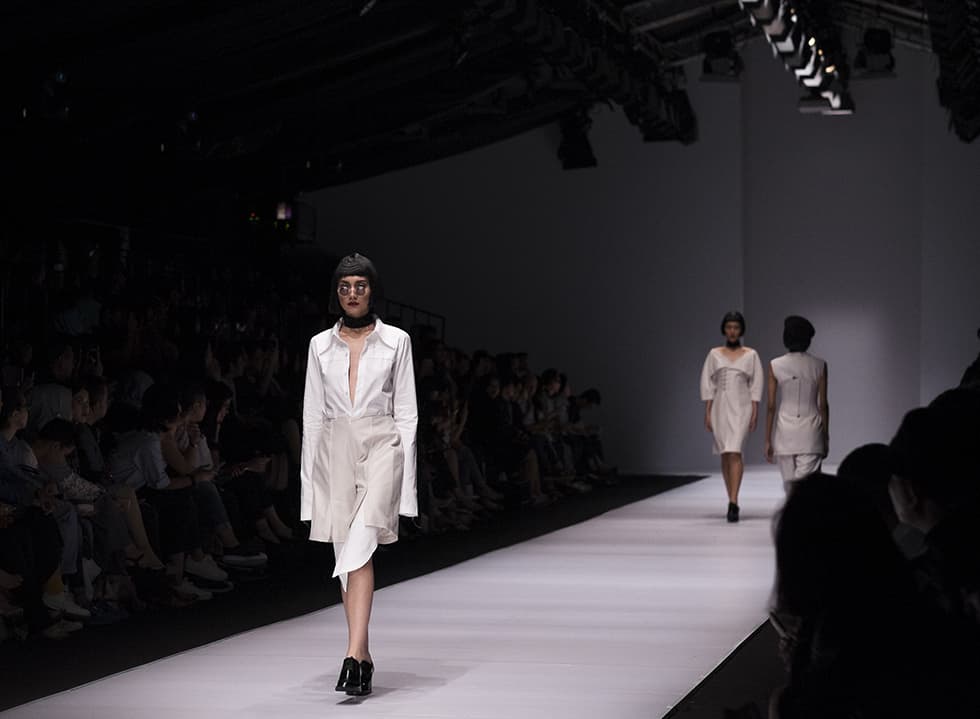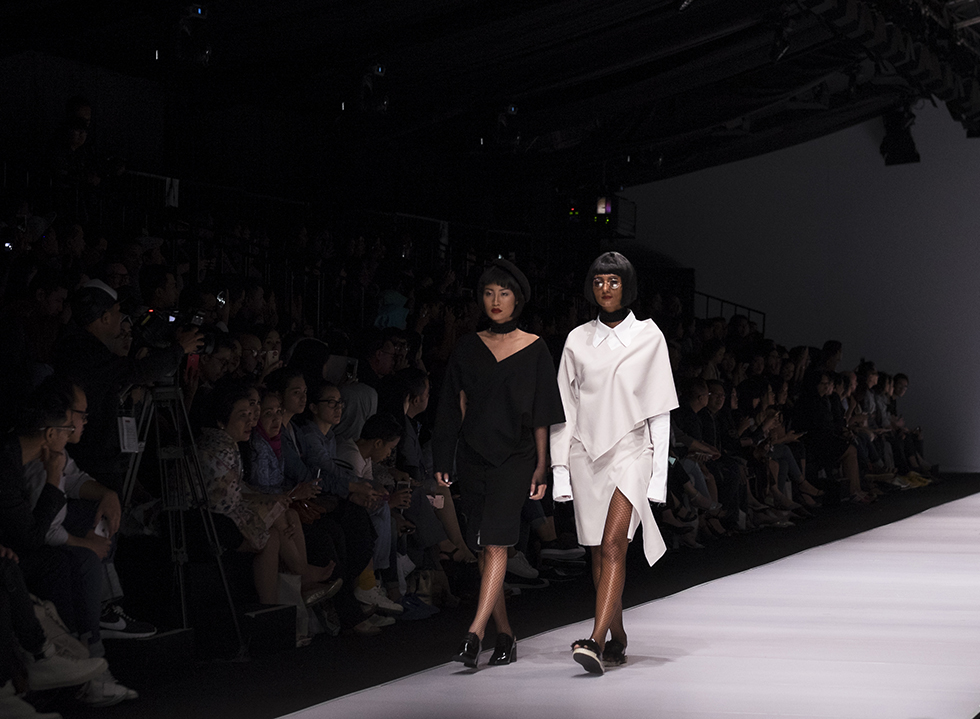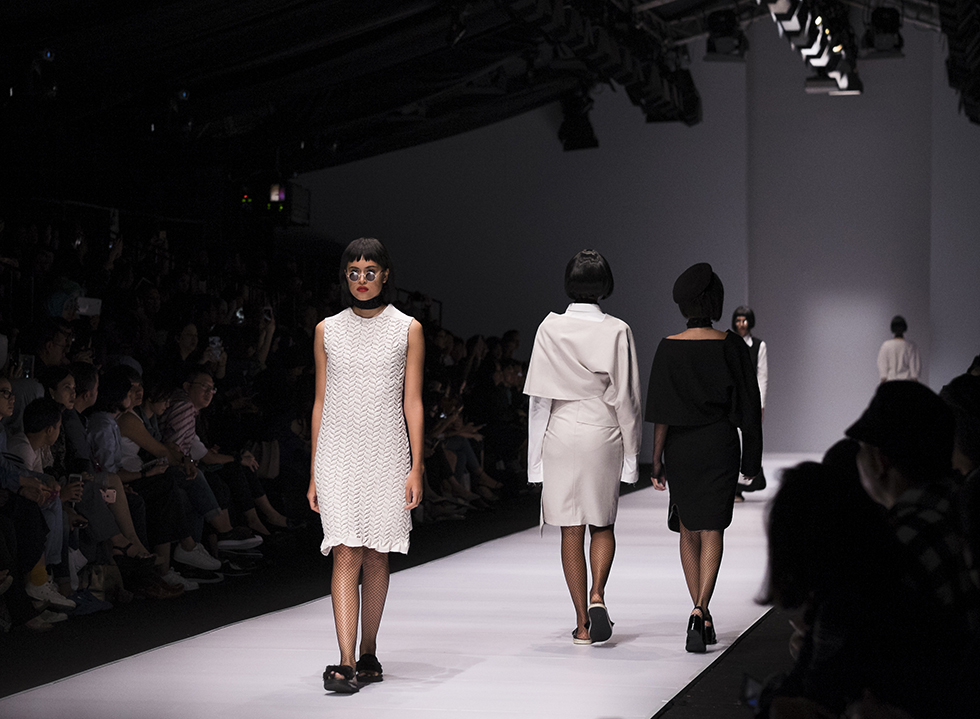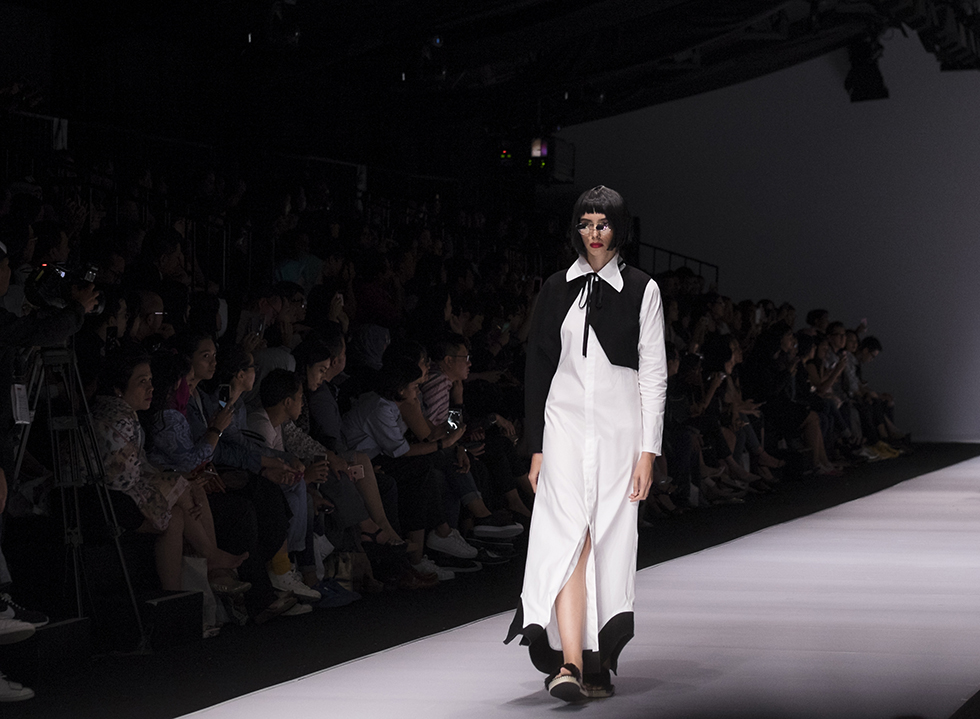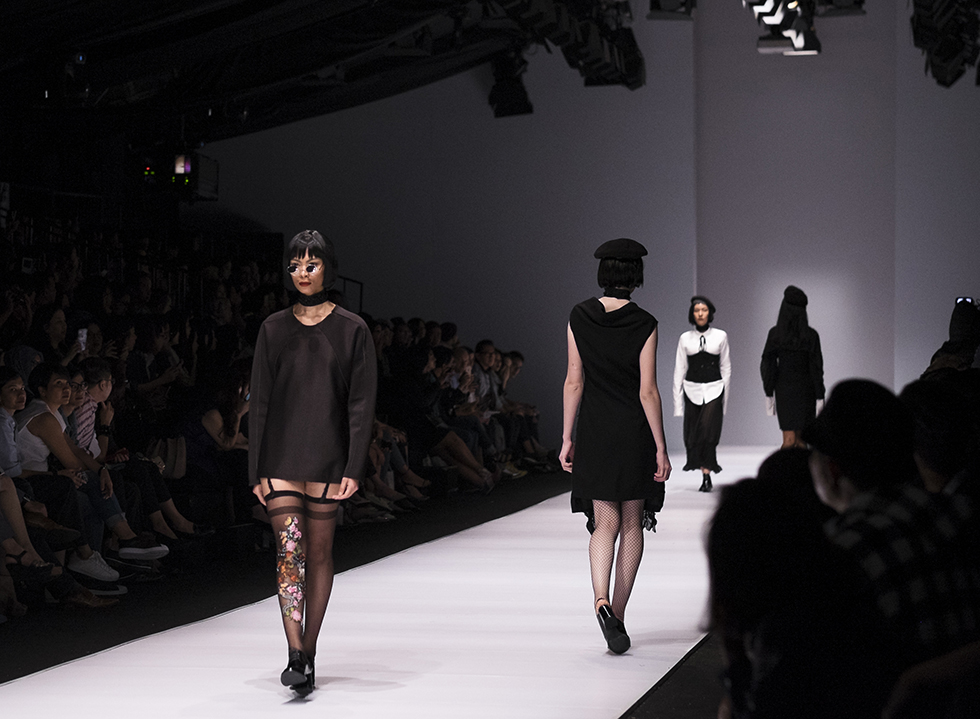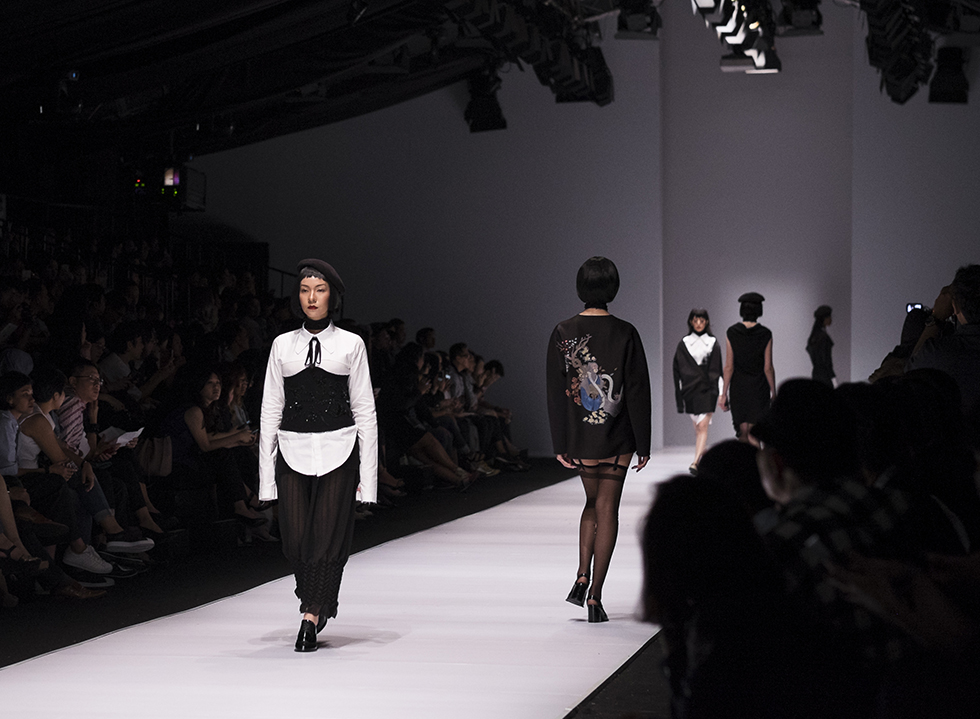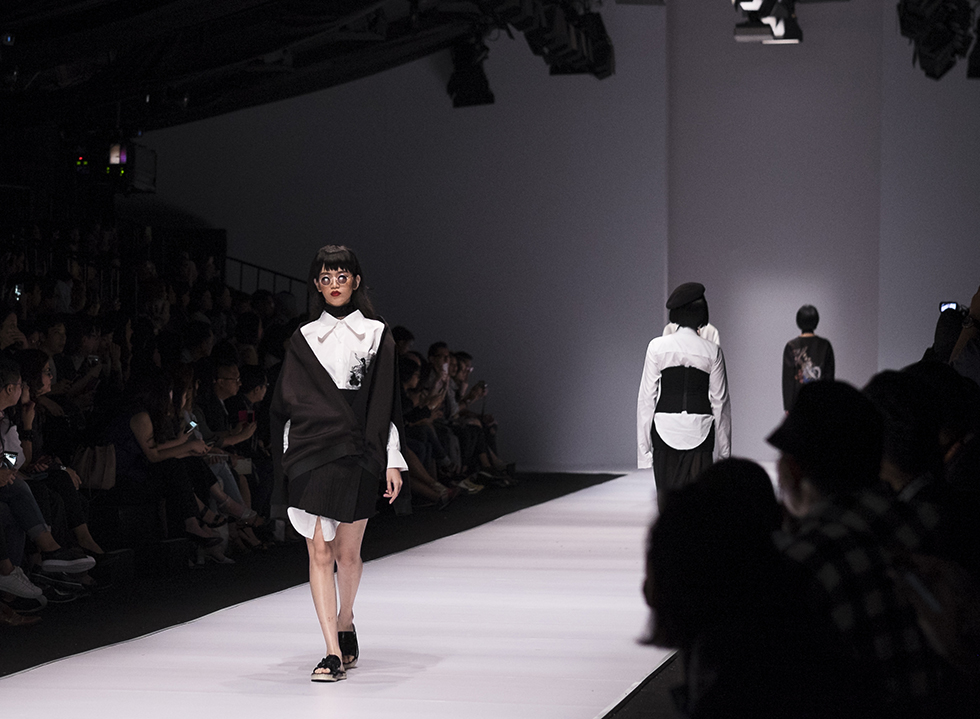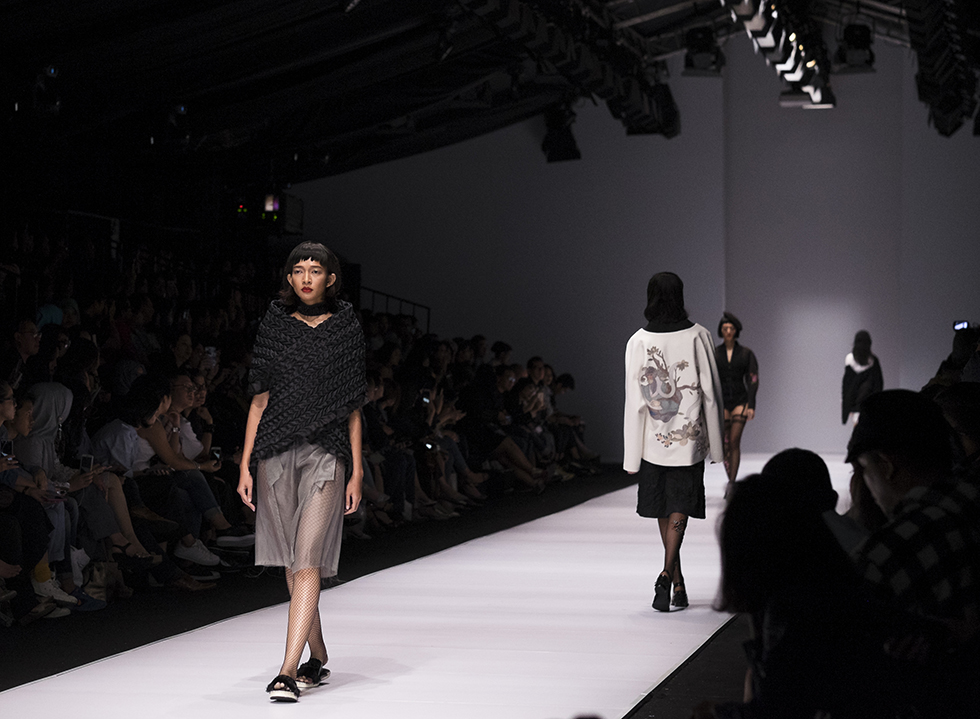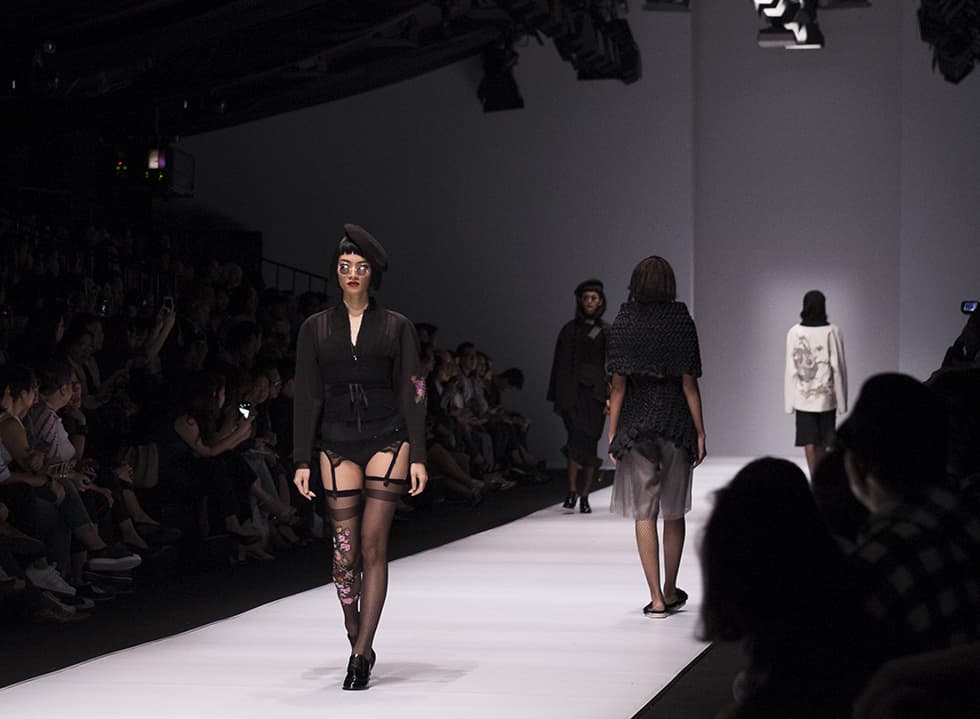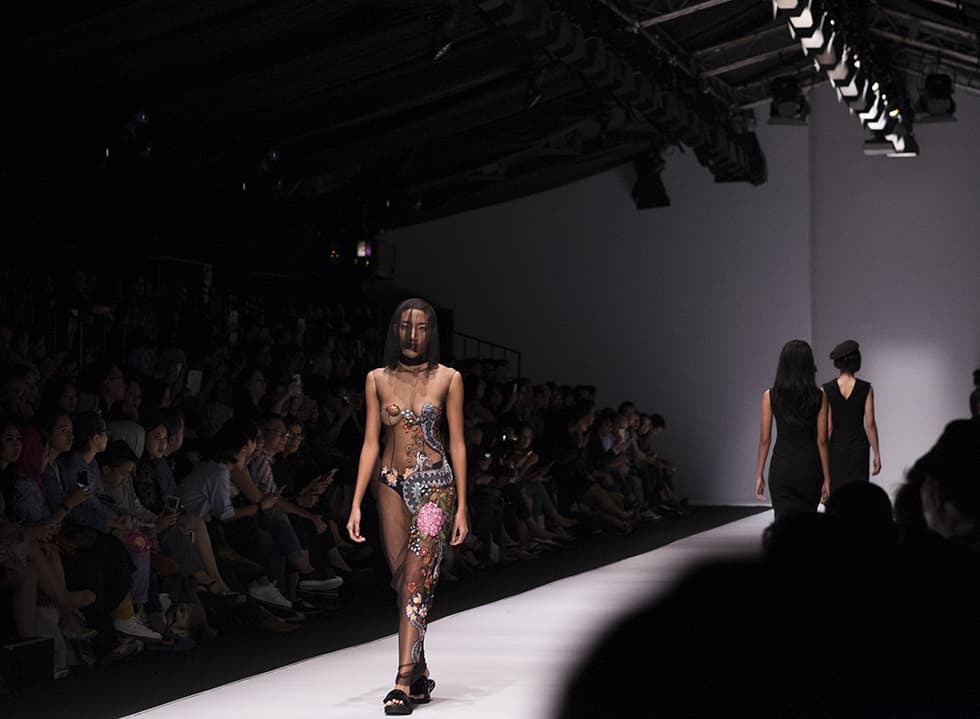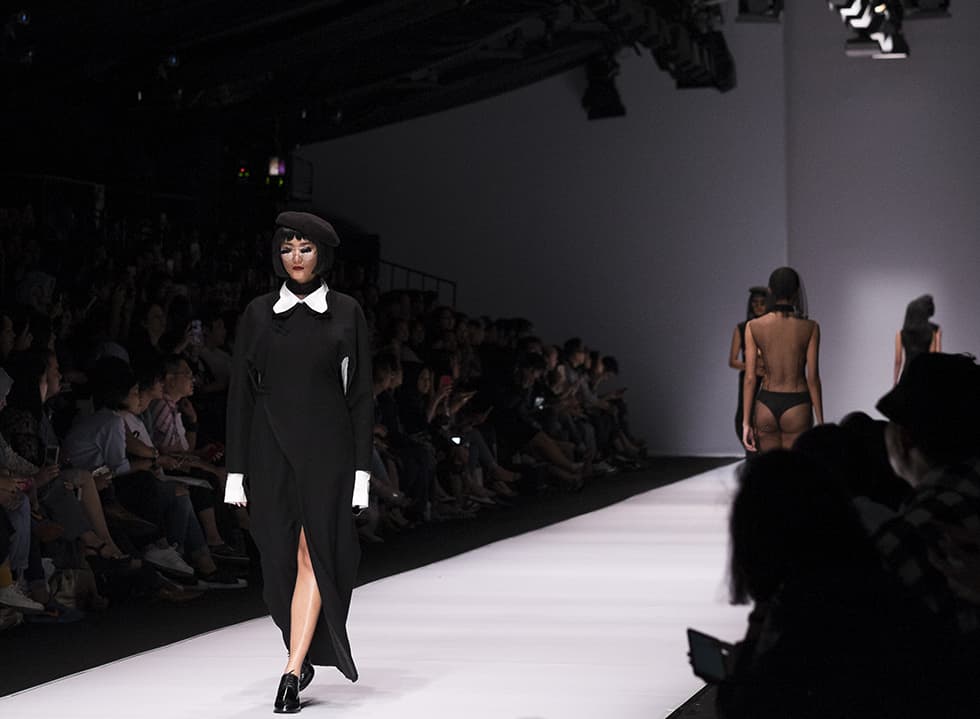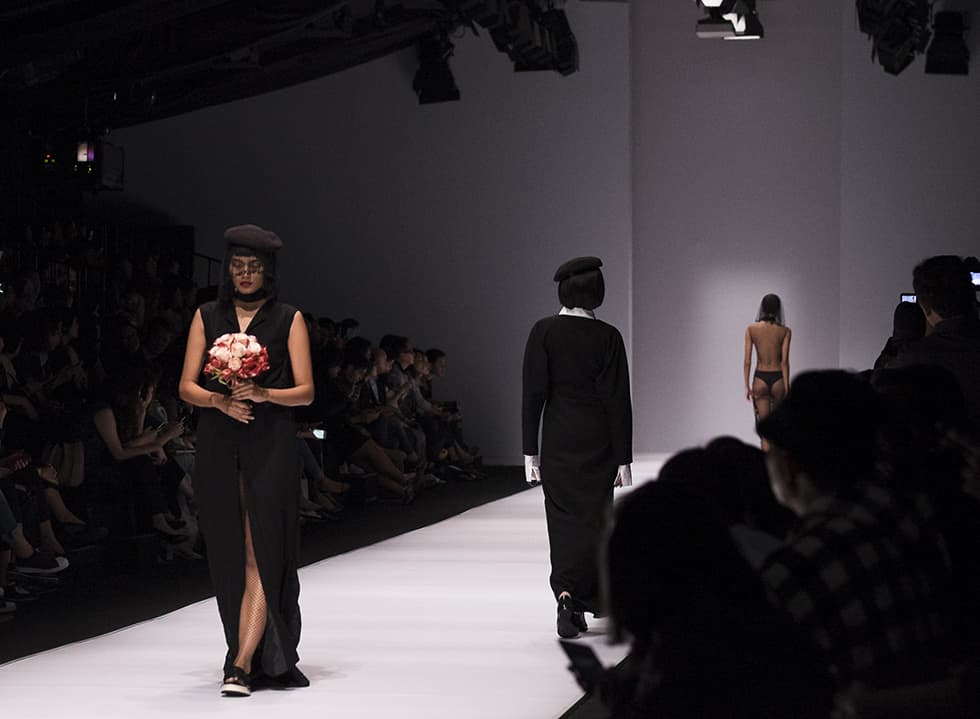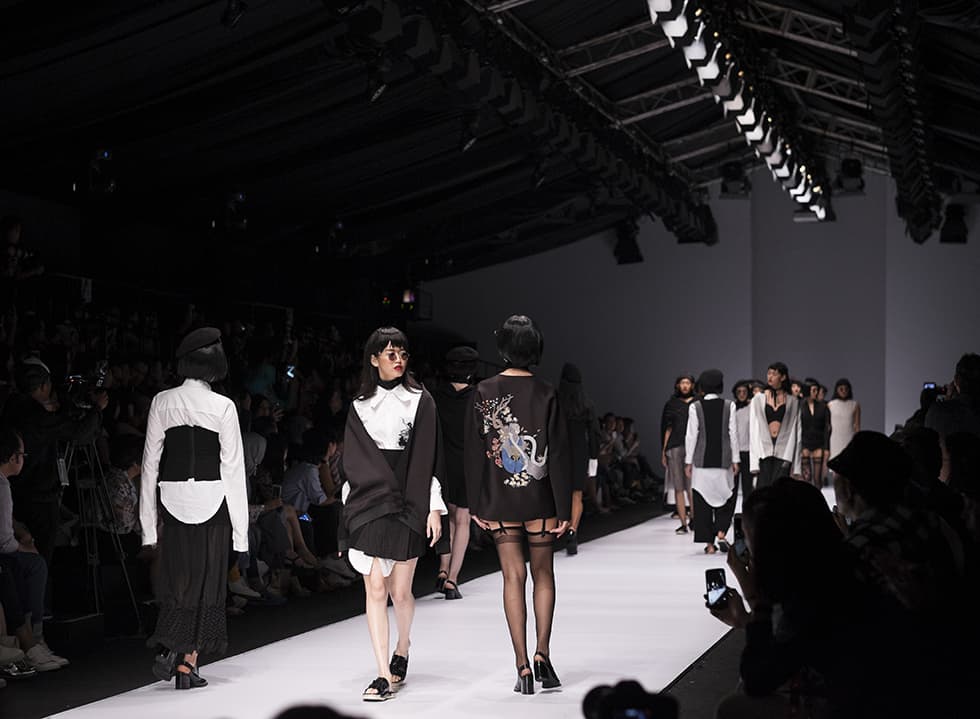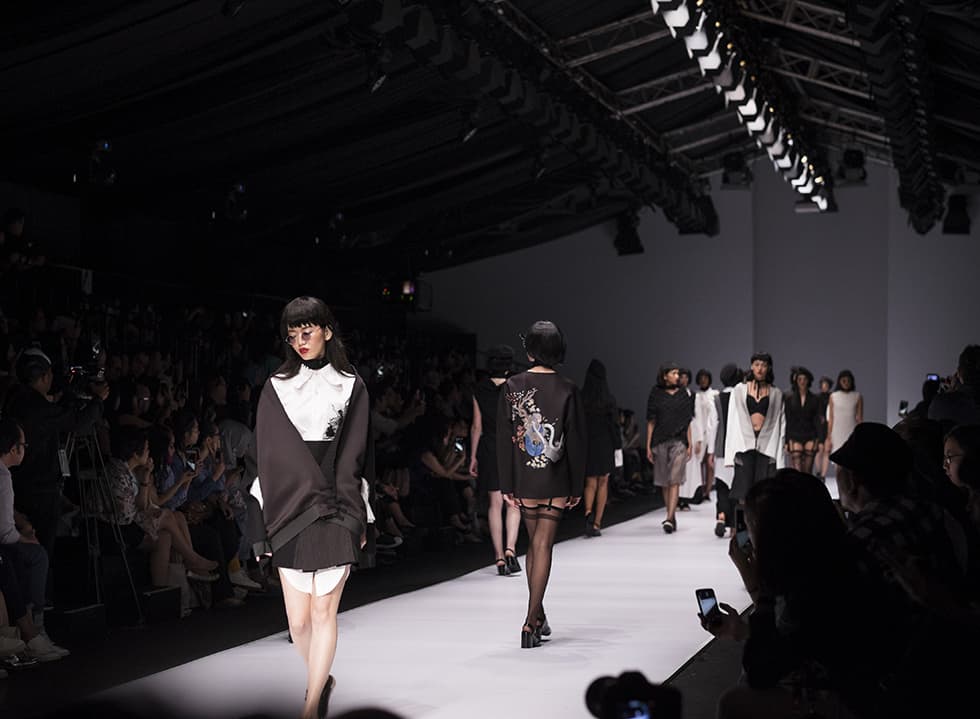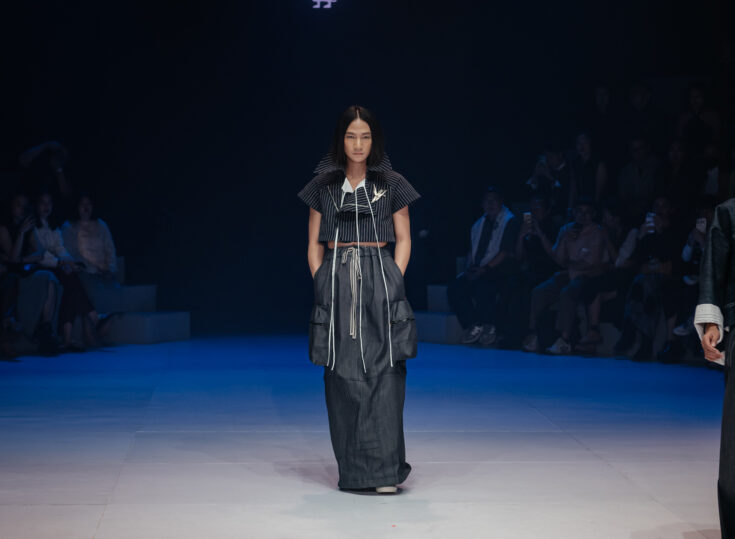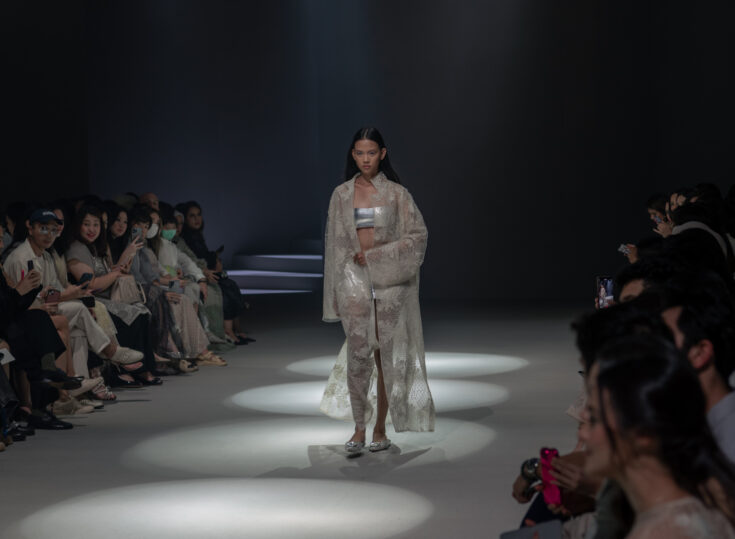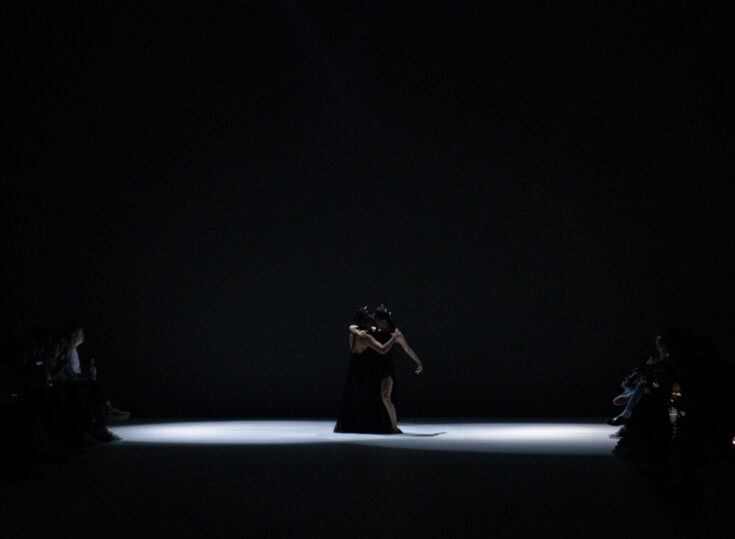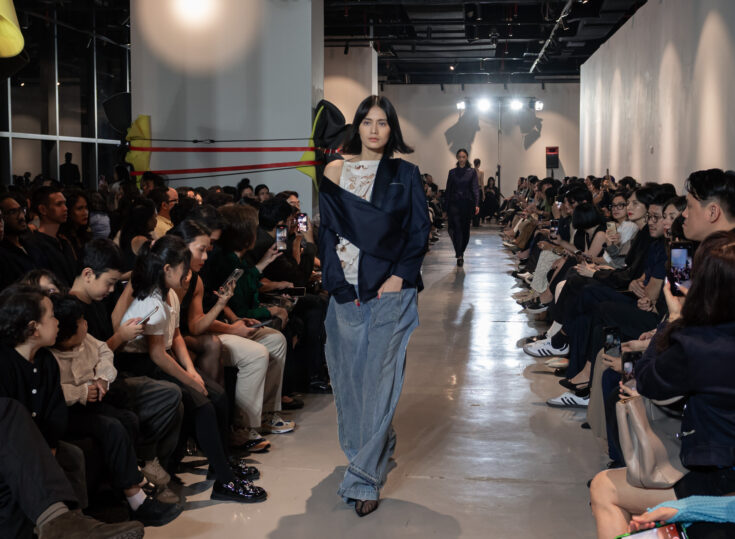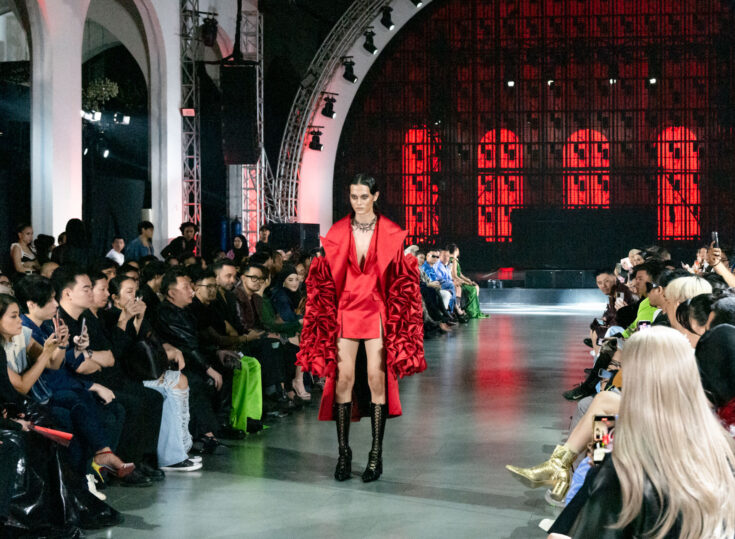While many Indonesian designers would love to be in the shoes of Toton Januar, they might not be envious with the amount of workloads the designer is having this year. Apart from competing in the International Woolmark Prize Asia Regional (which he subsequently won), Toton had to come up with Spring/Summer 2017 collection and another one under Dewi Fashion Knight for Jakarta Fashion Week within a short frame of time.
Instead of cracking under pressure, Toton cleverly took this chance to retrospect and develop some of the key elements that had been recurring over the years from his eponymous label. What was clear is that the proposed silhouette was predominantly nipped at the waist. No matter how roomy a dress or a blouse was, they were cinched, sending a message that the women of Toton are at once relaxed and in control.
Toton also eased up on the fit of the jacket and gave them a twist (literally) at the back. It was a recognisable evolution compared to his early creation where they were generally tight and aggressive with strong shoulders.
And of course, one can always expect an imaginative interpretation of traditional Indonesian textile from Toton. This time, the designer took the popular batik motif of interlocking circles and transplanted them into crocheted sleeves and skirts. In some way, it gave you this idea of a hand me down, as if an old table cloth was salvaged and assimilated into the wardrobe as a means to preserve memories.
In whole, the collection felt like a presentation of Toton’s “greatest hits”: a quick trip down memory lane for the longtime fans as well as a quick introduction for those who are only about to get acquainted with the label.
The retrospective mood was also present in Patrick Owen’s eponymous collection. The designer has been noticeably interested on the potent force of female sexuality, particularly through the idea of innerwear as outerwear, and had presented them a few seasons back. But what made it different this time round was that it is more refined and sure-footed.
Models walked out in slow, calculated pace that allowed you to appreciate the details and the cut of the clothes, especially the curving seams of the corset and the embroideries on the back of jackets. Shirts were oversized and dropped down to the thighs, peeking out under the dress and short trousers.
The collection was also unsettling due to the dark undertone that it transmitted. Every model carried a hollow gaze as if permanently traumatised. One in particular walked out in veil and see-through dress with beautiful embroidery of a huge snake and flora that coiled over parts of her body, barely covering her modesty. You couldn’t help but to give into the suspicion that she might be a sex slave, already sold to the highest bidder.
This could very well be Patrick’s most personal collection to date as it stemmed from the subject matter of the designer’s childhood as well as his mother. But the great part was that the show gave you room for interpretations. It was also enjoyable because Patrick did not allow them to be bogged down with complicated and ostentatious concept, which often afflicted his past collections. This show will no doubt stick in the audience’s memory for a long time to come.
